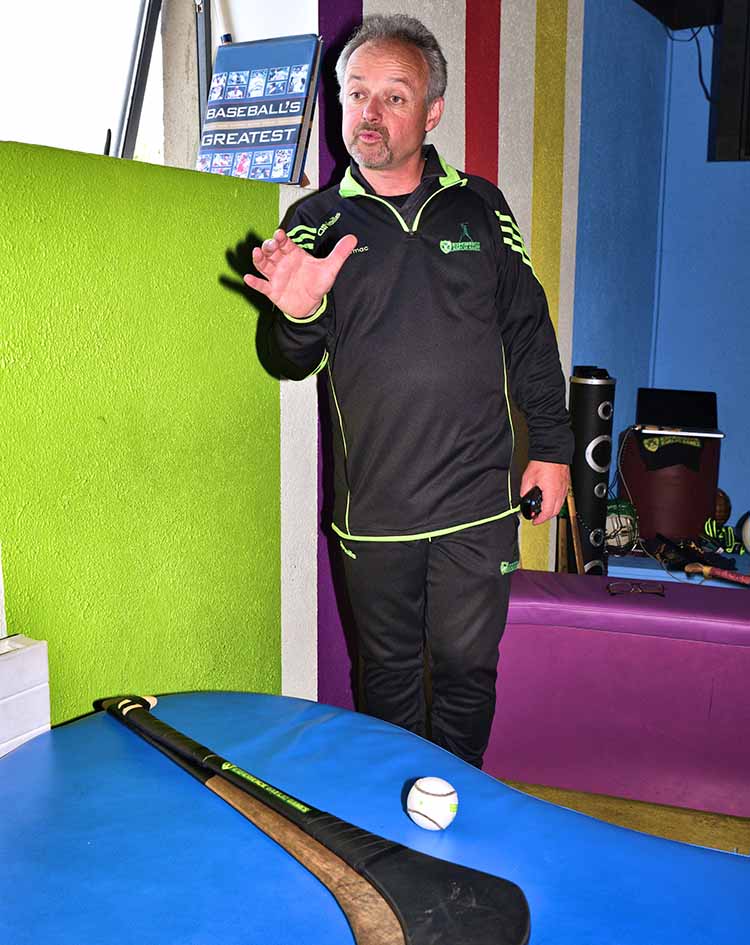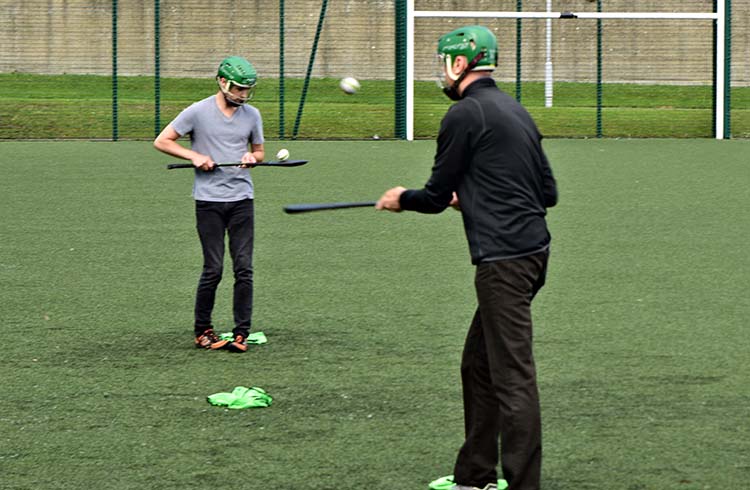Sticks and Kicks: Learning Gaelic Sports in Ireland
The Gaelic game of hurling dates back thousands of years – Gaelic football originated in the Middle Ages. Ronan O'Connell tries his hand at the sports his distant ancestors played.
 Photo © Getty Images / Stephen Barnes
Photo © Getty Images / Stephen Barnes
There he is, my favorite Gaelic footballer. So many times I’ve watched Keith Higgins on TV, as he represents my beloved County Mayo in front of roaring crowds of up to 80,000 people. On-screen, he appears colossal.
Now, standing in front of me in Ballina town in Mayo, he just looks like a bank employee. That’s because he is one.
Ireland’s Gaelic sportsmen and women are national celebrities, elite athletes, and the pillars of a hugely lucrative sports-business empire. Yet they’re also amateurs. Despite drawing millions of fans to Irish stadiums and television sets each year, they earn no direct salary from the sports. Some of them get perks, like corporate sponsorships.
But most Gaelic athletes have to work day jobs, as they don’t get a cut of the revenue they help bring in. Instead, that money is controlled by the organizing body, the Gaelic Athletic Association (GAA). The GAA uses that revenue to run these sports, helping fund everything from under-age community competitions up to the pinnacle that is the inter-county level.
Higgins has played for County Mayo’s senior Gaelic football team since 2005. Had he instead chosen rugby or soccer, a top-level career of that same length could have netted him millions of Euros in salary. What he and his fellow Gaelic athletes earn is respect. They may not be showered with cash and feted like royalty wherever they go, like the superstars of basketball, baseball, and soccer, but they’re greatly admired and appreciated across Ireland.
Getting to know Gaelic sports
That’s the message Gaelic sports aficionado Cormac O’Donnchú is keen to deliver when I meet him in Dublin. “Gaelic sports are all about the grassroots, about community spirit,” Mr O’Donnchú tells me while we stand in Na Fianna Gaelic Club, of which he is chairman. Mr O’Donnchú is speaking with intense passion as he prepares to take me onto the club’s field for a crash course in the highest-profile Gaelic sports – football and hurling.
My wife and I, and an American family are taking part in a three-hour lesson with Experience Gaelic Games. This is the company founded by Mr O’Donnchú and his wife Georgina Caraher to promote Ireland’s indigenous sports to foreign visitors. During these lessons, visitors learn about the history and rules of the sports before instructors teach them the basic skills involved.
I am reasonably competent at Gaelic football. Having grown up in Australia, where I was raised by Irish parents, for many years, I played Australian Rules Football, which some historians believe was influenced by Gaelic football and is very similar.
The game of hurling, however, is much more of a mystery to me. Although I’ve watched many hurling matches on TV over the past five years, living on and off in Ireland, playing the sport is much harder than it looks. Yet the Irish mastered it a long time ago.

Thousands of years of Gaelic sports
Gaelic sports are astonishingly old, dating back 3,000 years. That is not a misprint. Irish historians believe hurling has been played for at least that long, while Gaelic football originated sometime in the Middle Ages (5th to 15th centuries AD). If my distant ancestors could play hurling, maybe I can too?
“I’ve always done a lot of sport,” I tell Mr O’Donnchú confidently as I bend down to pick up a hurling stick on his club’s playing field. I’ve played cricket, which, like hurling, involves hitting a small ball with a wooden stick. Those skills should be transferable, I figure.
So I toss the baseball-sized sliotar (ball) up in the air just in front of me. I raise my hurling stick, which is similar in length to a baseball bat but has a wide, flat end. As the ball falls back down, I aim at it with force. Swing and miss.
My second and third attempts produce the same result. My confidence is shattered.
It takes a further beating when the American boys, who have never played hurling before, begin wielding their sticks impressively. “They’re naturals,” Mr O’Donnchú says to me with a smile. I watch as the boys quickly become accustomed to scooping the sliotar off the ground with their stick, lobbing it in the air, and hitting it to a teammate.
That’s the aim of hurling – to move the ball down a large, rectangular field either by hitting it to a teammate or running with it balanced on top of the stick, before trying to score.

The differences between Gaelic football and hurling
In hurling, a goal is scored either by hitting the ball between two upright goalposts (one point) or into the soccer-style goal at the bottom of the posts (three points), which is guarded by a goalkeeper.
Gaelic football has identical goals, posts, and scoring systems and is played on the same field, which is about 460ft (140m) long and 280ft (85m) wide. The key difference is that, in football, to move the ball players must either kick it or punch it. During our football session, my Australian Rules skills come to the fore. I manage to save a little bit of face after my shambolic efforts at hurling.
As we’re walking off the field, our session over, I ask Mr O’Donnchú if he ever gets bored of Gaelic sports. “Never,” he replies, casually balancing a sliotar on the end of his hurling stick. Having witnessed his boundless enthusiasm during our long session, I wasn’t surprised by his answer.
Even as I’m about to leave his club, O’Donnchú is imparting more Gaelic sports knowledge. His passion reminds me of countless men and women I’ve met back in Mayo. They adore their Gaelic sports and are especially proud of its amateur status and the humility that breeds in its participants. As Mr O’Donnchú explained, it’s all about community spirit.
Trip Notes
From Monday to Saturday, all year round, Experience Gaelic Games offers training sessions covering both hurling and football in Ireland’s three biggest tourist cities – Dublin, Cork, and Galway. Book in advance via their website.
County matches of hurling and Gaelic football take place from February to September at venues across Ireland. Consult the GAA website for fixtures.
Related articles
Simple and flexible travel insurance
You can buy at home or while traveling, and claim online from anywhere in the world. With 150+ adventure activities covered and 24/7 emergency assistance.
Get a quote


No Comments